Teaching a horse to pull a cart can be tricky. Many trainers argue that breaking a horse to safely drive and pull a cart is more challenging than simple saddle training- and for good reason: many horses initially have a strong reaction to the sensation of the long shafts on the side of their body or a cart following them. Based on millions of years of evolution, these sensory experiences trigger strong reactions in many horses. For these prey animals, being “caught” between two shafts or “chased” by a cart triggers a survival instinct in their brain telling them to flee or “bolt.”Many carts have been broken, wrecked, or ruined in the process of training a new horse to drive.
In this article, I’ll discuss some strategies we’ve used to introduce horses to a harness, shafts, and a cart in incremental steps. By introducing elements slowly horses and handlers grow confidence and trust through the training process.
If you aren’t experienced with horse training, carts, hitching harnesses and driving, seek out professional support. Do not attempt to teach yourself to drive or teach your horse to pull a cart without professional training.
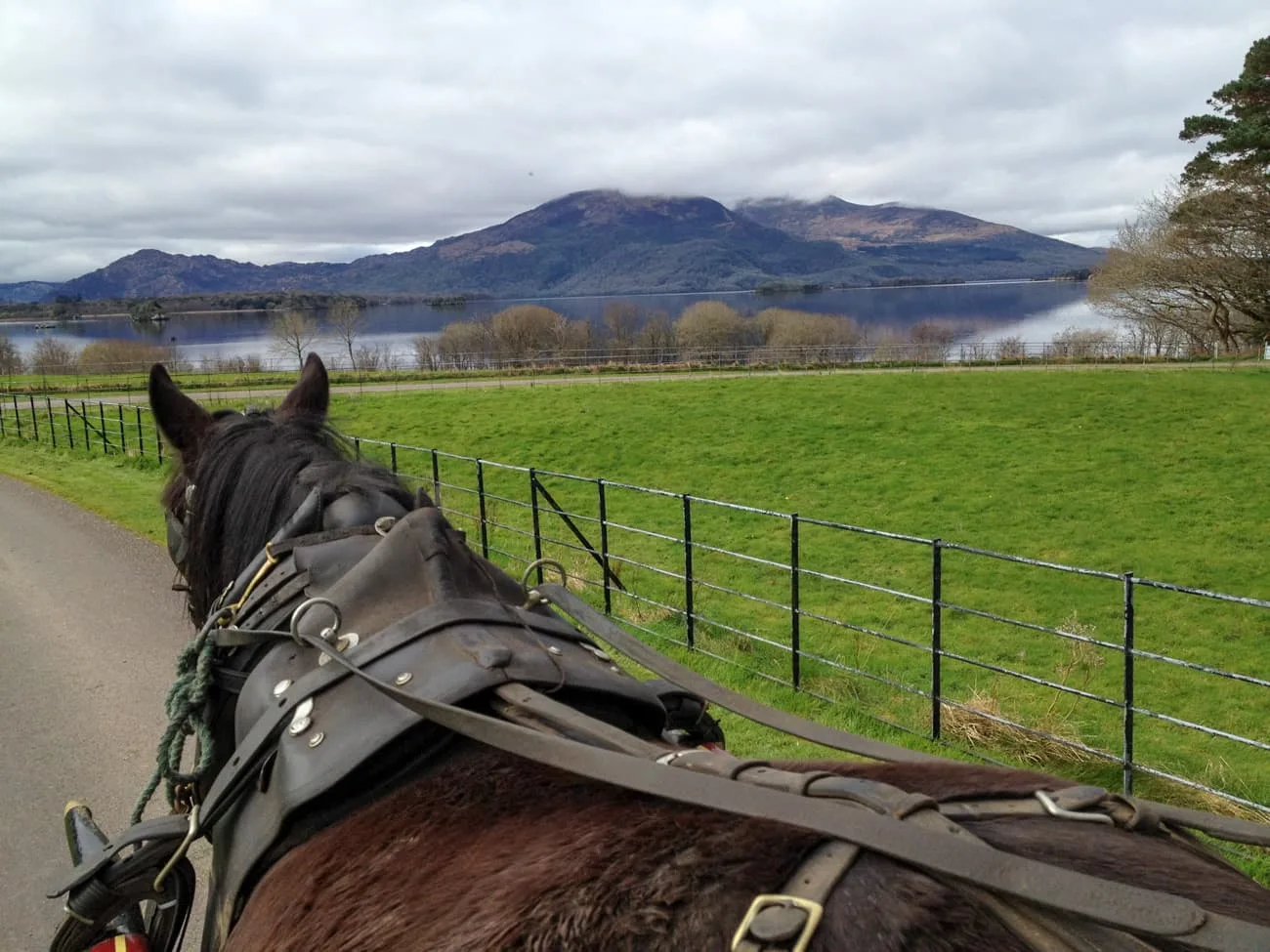
Building a PVC training cart to train horses to drive
This set of PVC shafts connected to a basic set of wheels is a solution for working with inexperienced horses or inexperienced driver/handlers (though, ideally, not both at the same time.) The thin PVC rails make it possible to graduate desensitze a horse to the experience of being harnessed to real shafts and having a “cart” bounce along behind them. The PVC material and breakway-connections significantly reduce the risk to horses, handlers, and property.
The following section may contain affiliate links. As an Amazon Associate, we earn from qualifying purchases.
This simple PVC set-up is constructed from 1 inch PVC pipe and a simple set of wheels (typically, push lawnmower wheels- which can be purchased at Amazon for around five dollars each). Long shafts are joined to PVC bars via PVC joints. The entire training cart is then glued together using pipe glue and all exposed ends are capped to add additional safety. When I made my training cart I opted to use a very minimal amount of glue – enough that the training cart would stay together during training, but would break apart under extreme pressure- such as a pinned or panicked horse.
Once the glue has dried, drill a hole in the end of each shaft and place a string of leather latigo through the drilled hole. The training cart attaches to a horse by using the leather strings to tie the training cart to D rings on a surcingle- which features D-rings at various points on the strap. Depending on your horse’s conformation, a breastcollar may be required to prevent the surcingle from slipping backward down the horse’s body as the lightweight training cart trails behind.
The training cart can be used for horses when line driving. The handler simply stands behind the horse or, if comfortable with long lining a horse with two reins, stands in the center of a large circle and directs the horse- from the center. The training cart may also be used during lunging at a walk and trot if the horse is already trained to lunge quietly.
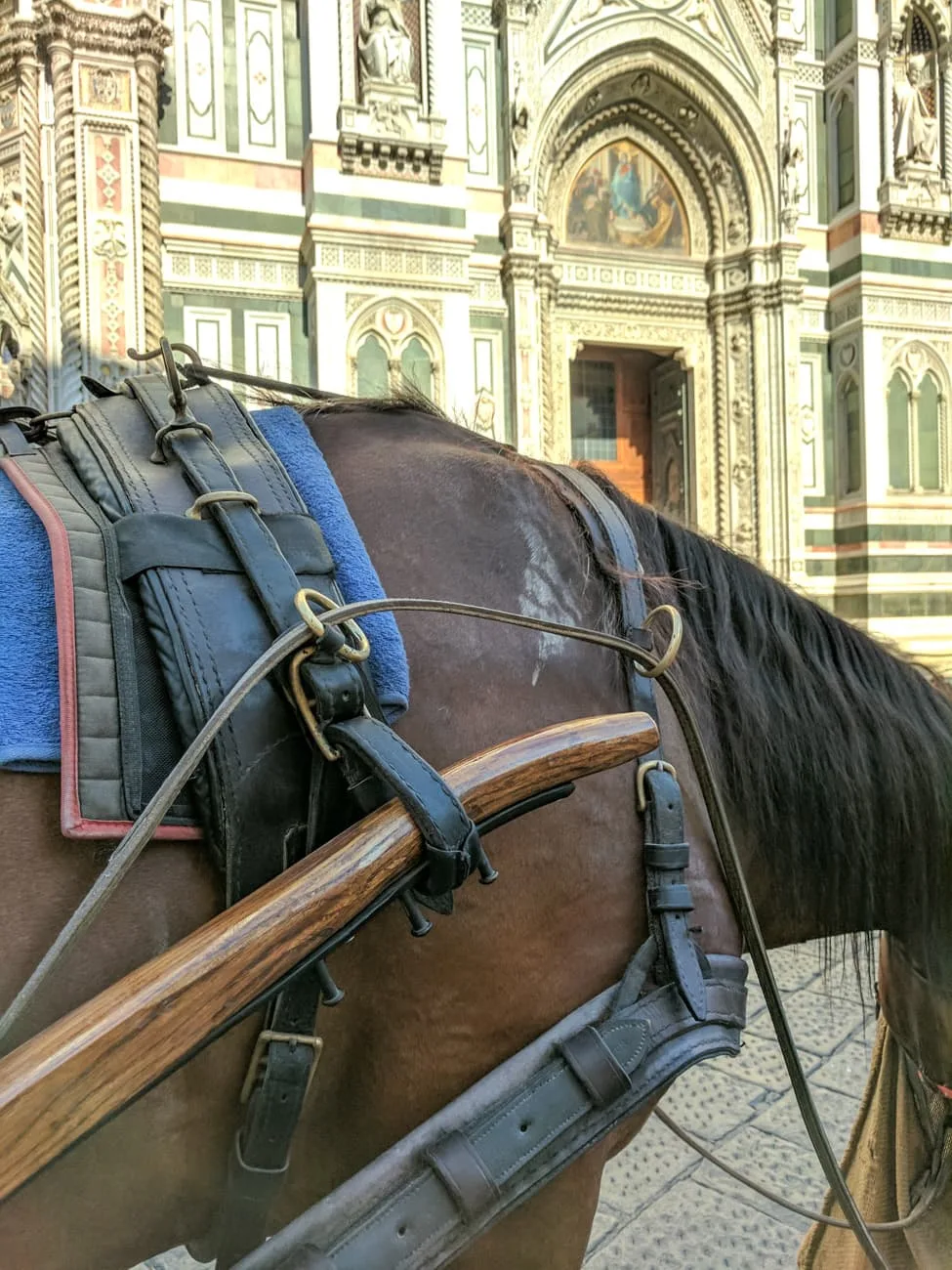
Introducing a Horse to a Driving Training Cart
The training cart should be introduced slowly. Never roll the PVC training cart directly up to a horse and strap it on without introduction. Instead, progressively desensitize the horse to the experience, the cart, and the feeling of their body being between shafts:
Use Exam Stocks to Introduce Confinement between Shafts
To begin training your horse to drive, you don’t even need a cart. One of the toughest parts of driving training for horses to get used to is overcoming the instinctual urge to escape being “trapped” between the shafts of a cart that, when hitched, run alongside the horse’s body on both sides. One way to safely accustom a horse to this experience is by taking advantage of your veterinarian’s horse stocks (sometimes called exam stocks). These heavy-duty, narrow steel stalls can help a horse get used to being confined between two close, rigid barriers.
Acclimate the horse to moving with something touching their sides
Some horses may benefit from an additional training/desensitization step of being desensitized to a short (2ft-3ft) PVC pipe attached horizontally to their surcingle in previous training sessions in order to get accustomed to the feeling of a straight bar in contract with the side of their body as they walk, trot, and move forward on a lunge line. (Be sure the PVC pipes you use are always capped, as this reduces the chance of injury in the event that the horse panics)
Slowly introduce the presence of a cart following the horse
When a horse is comfortable with having short shafts attached, in a subsequent training session, a second handler should drag the cart first in front of and then behind the horse as it is lunged at a walk and trot. If a horse is highly responsive to this part of training, consider using blinders to block the horse’s vision of the cart behind.
Use a breakaway connection to attach the training cart
Once the horse is quiet, docile, and bored in the presence of the detached PVC breakaway cart, try attaching the PVC cart to the horse’s surcingle using a breakaway connection like natural-fiber string or a thin leather strap. Always take this step at the end of a long, tiring training session with plenty of physical activity, rather than introducing it at the start- a tired horse is more likely to accept the experience without a significant reaction. In the first session in which the cart is attached to the horse, remain standing at your horse’s head and simply lead the horse forward.
As your horse becomes accustomed to the sensations, begin leading the horse through very, very wide turns to accustom them to how the shafts will come in contact with their body in different ways.
Using Blinders for Driving training
If you are working with a highly-sensitive horse or a horse you anticipate may have trouble accepting the dummy cart trailing behind, consider blinders or a racing hood. These inexpensive and humane devices limit the horse’s normally very wide range of vision. With blinders or a hood with molded eyecups, horses can be trained to pull a cart without being able to visually see the cart behind them. Without the frightening visual stimulus, many horses are able to calmly work in harness and be trained to pull a cart.
After the horse is calm, comfortable, and bored being led with the dummy cart trailing behind, you can begin lunging or long lining your horse with the dummy cart (always at a walk or trot, never at a canter) as they become confident driving horses moving towards pulling a real cart.
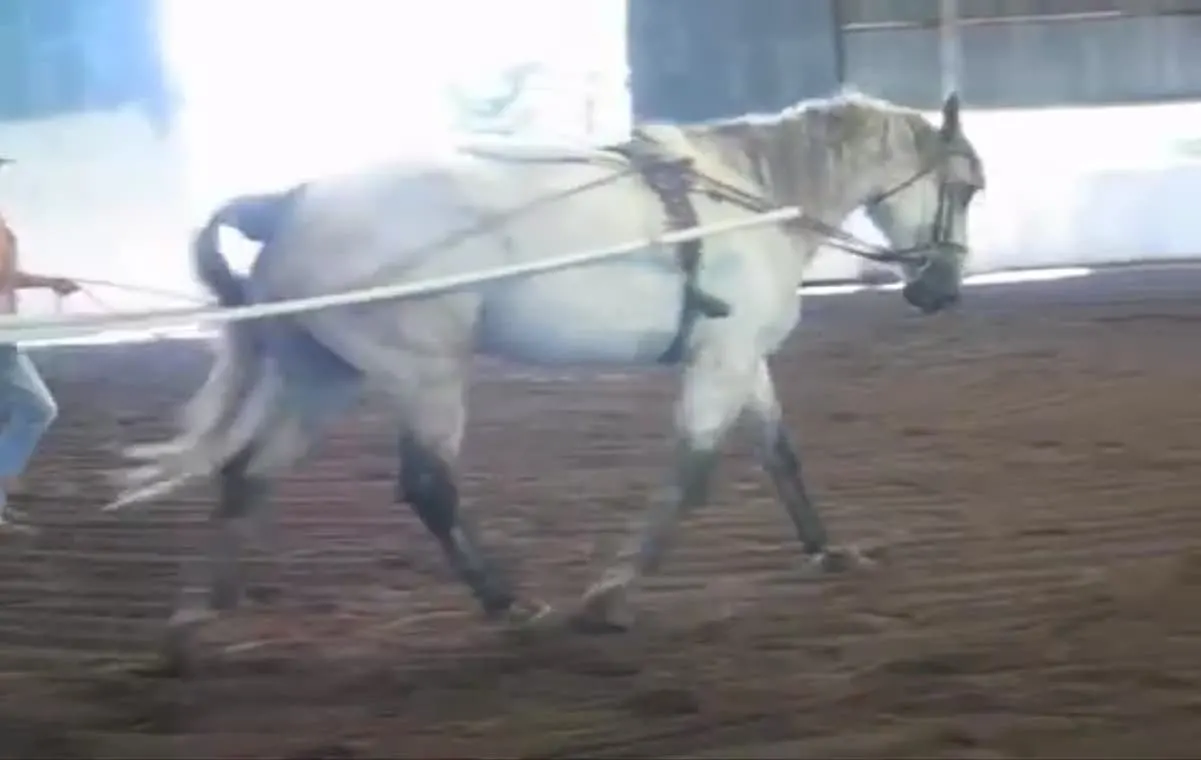
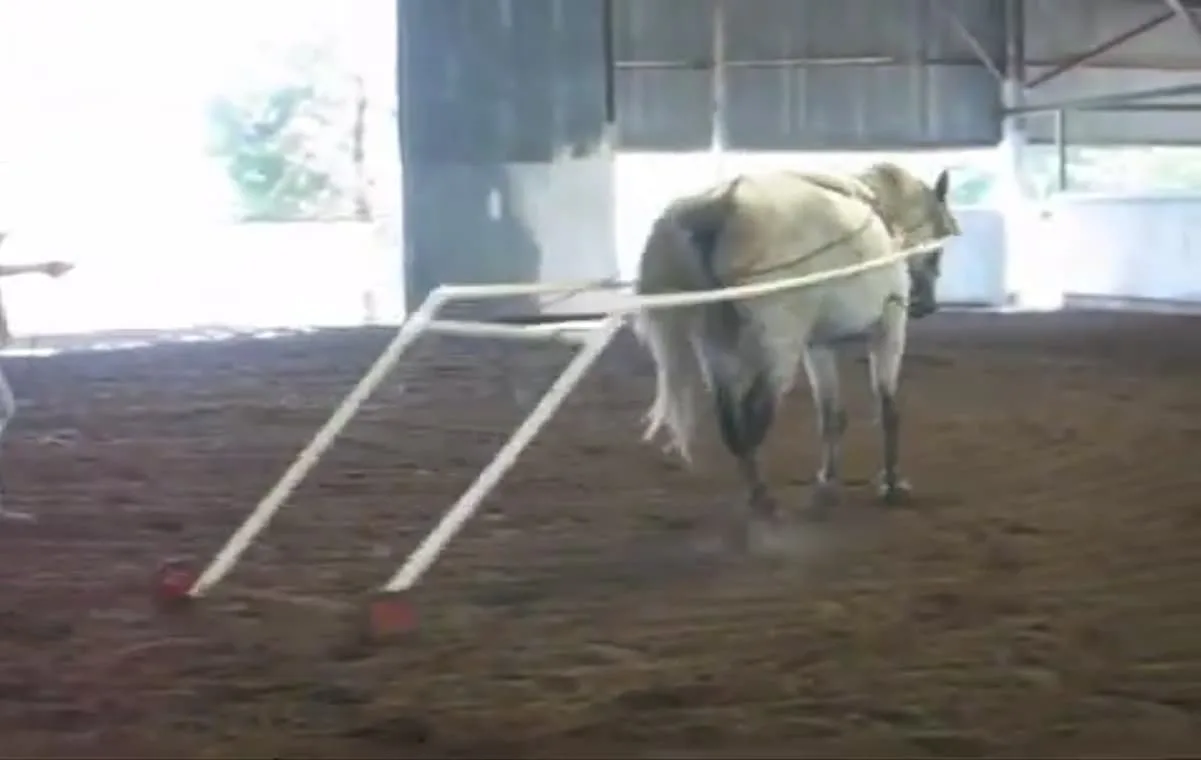
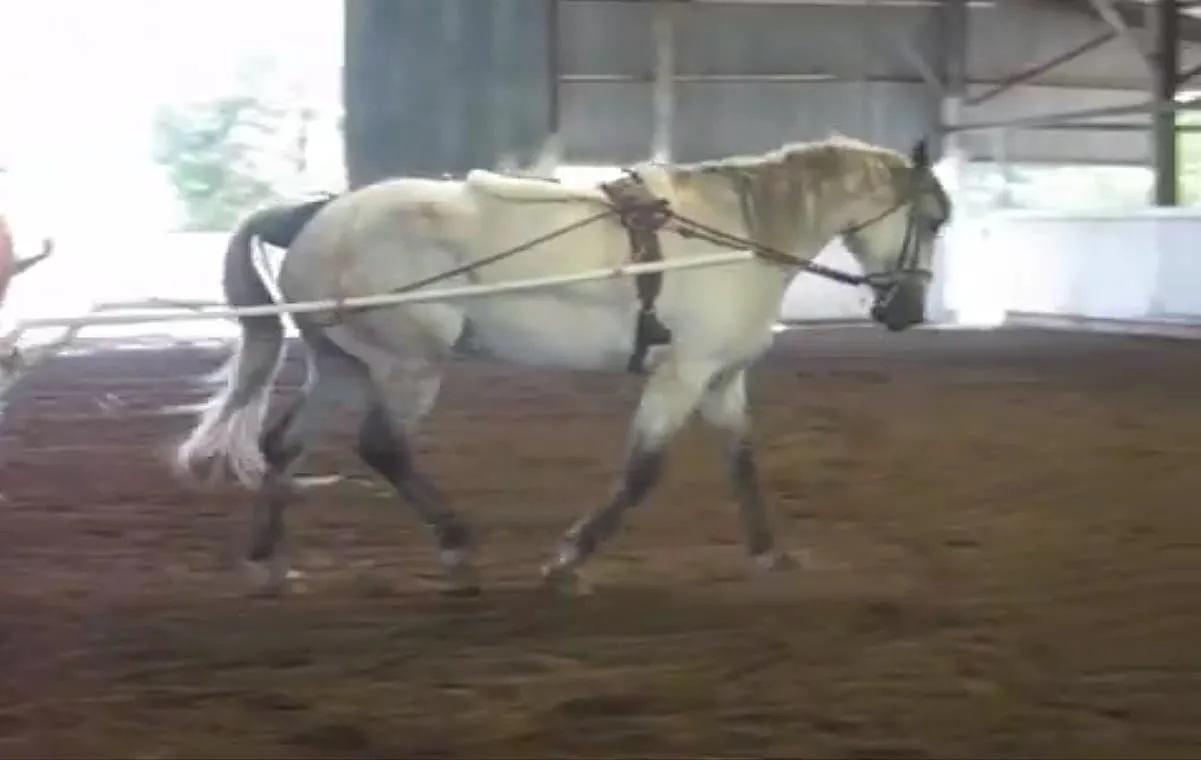
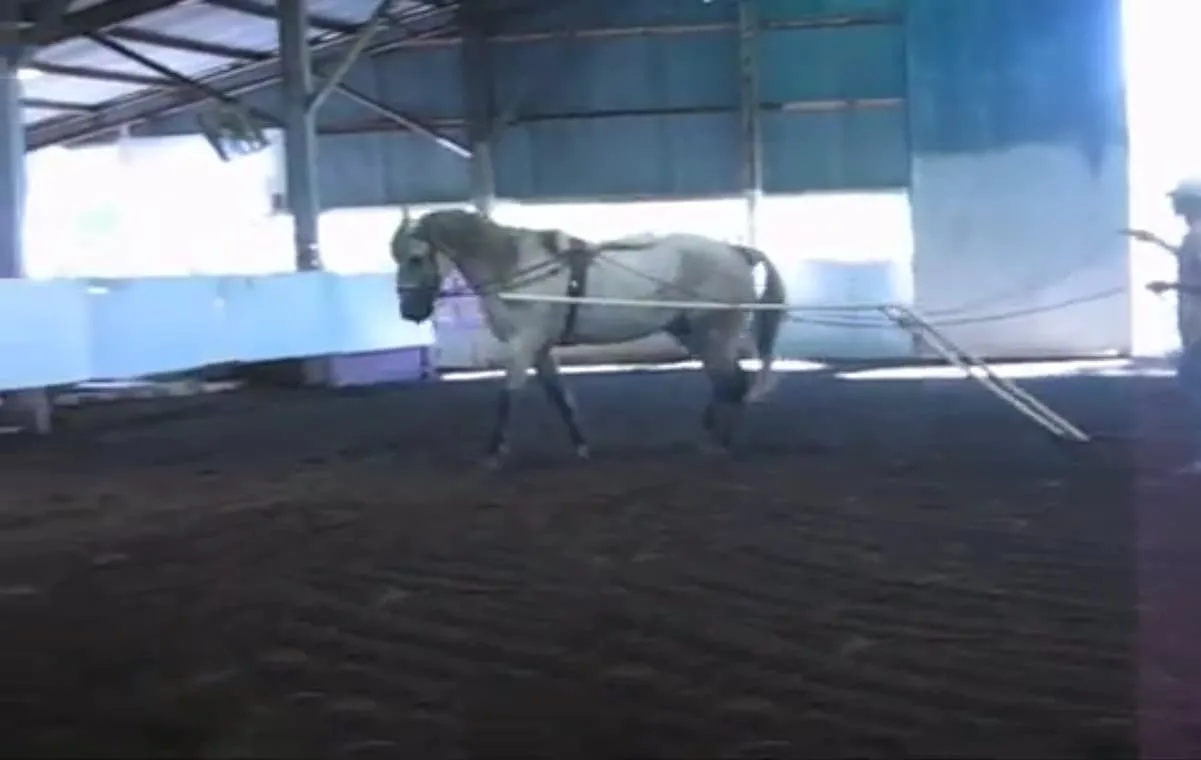
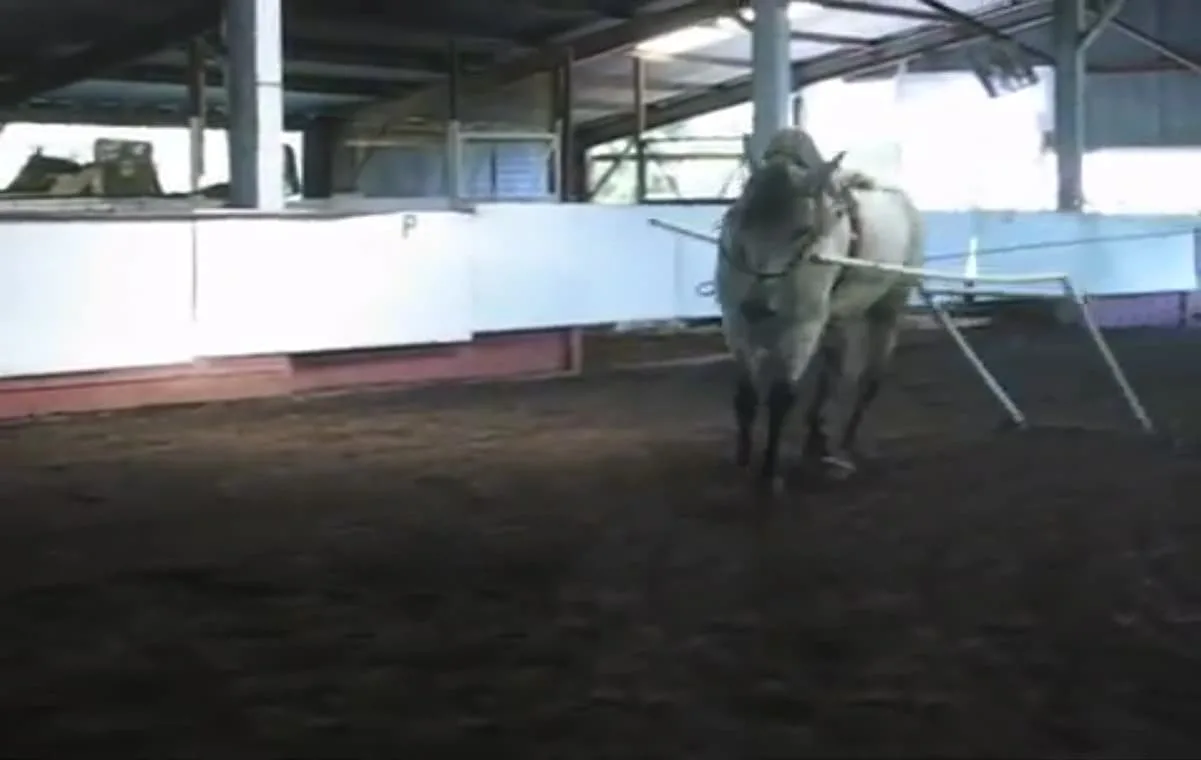
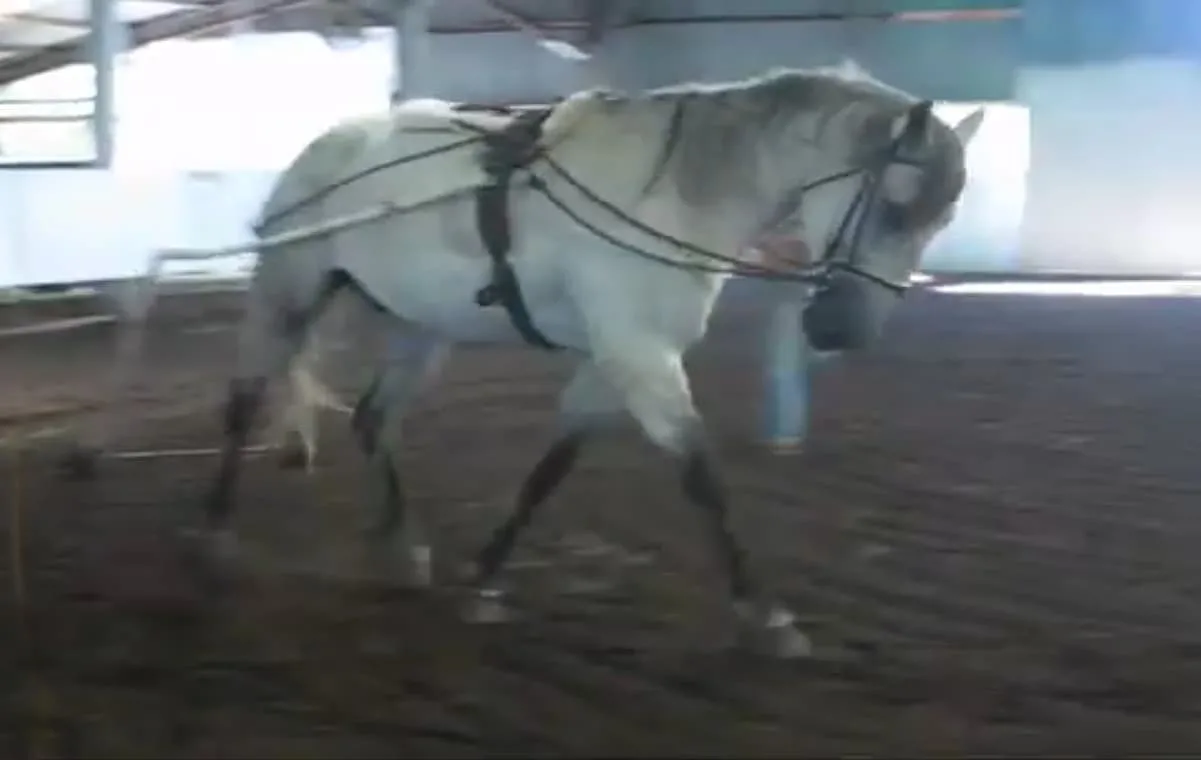
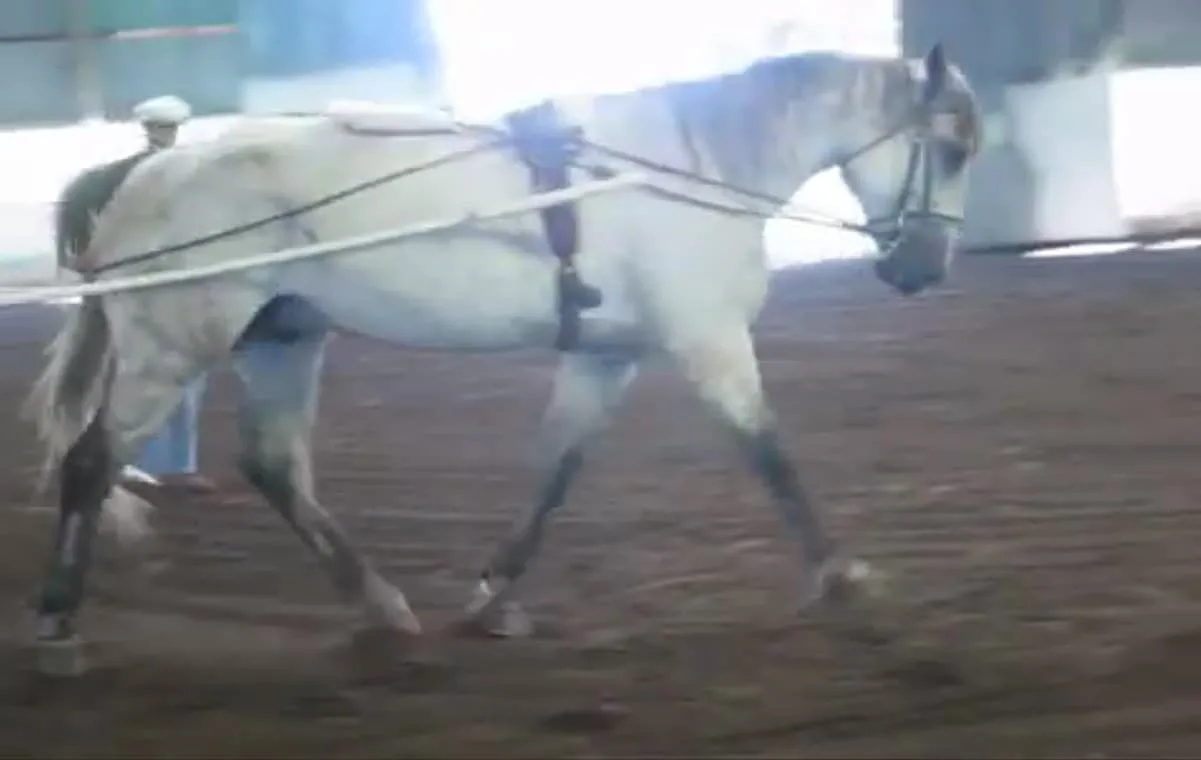
The photos above are video stills from a video taken of a grey bashkir curly gelding being trained to pull a simple DIY horse cart designed to orient a horse to the experience of pulling a cart. When a horse pulls a cart, they must learn to: A. tolerate shafts pressing against their sides and hindquarters (limiting their freedom to turn naturally), B. desensitize to the sounds, movement, and weight of a cart bumping along behind them, and C. The horse must learn to respond to rein cues without a rider. Although this is natural for horses already trained for riding, this can be a challenge for young horses.
In the photos above, the horse is being long-lined in the setup described, with a half-pad held in place by a training surcingle. Using a PVC training cart, this horse was broken to many of the sights, sounds, and sensations of pulling a cart without the potential danger of damage to the cart or injury to the horse if the horse was to panic as they were growing used to the cart.
Ground Driving and Long Longing in Preparation for Driving
It’s not unusual to ground drive young horses before breaking either to saddle or cart, an additional step of training that can be very helpful is called “long lining”. Longlining is a combination of lunging and long lining in which the horse is worked in a circle around the handler, but rather than a single lunge line clipped to bit or halter, two very long reins (lunge lines work) are used.
In long lining, the ground driving handler moves to the inside of a circle and, with outside rein passing through a D ring on saddle or surcingle and circling the horse hindquarters, and inside rein passing through D ring on saddle or surcingle the horse is worked in a circle around the handler. While lunging is typically used to exercise horses, long lining provides both exercise and training, where a horse can be taught to halt, lengthen or shorten strides, and collect off the outside rein without ever having a rider mount for the first time.

Learning How to Drive a Horse and Cart
If you’d like to learn to drive a horse and cart- seek out a local horse trainer. Although the majority of horse trainers don’t have experience driving, most have a professional contact they can put you in touch with for training and instruction in how to hitch a harness and drive.
Driving a horse and cart is much more difficult than it appears. Learning to drive a horse is almost as challenging for new handlers as it is for green horses. While seasoned driving horses know how to maneuver their bodies around corners in a way that keeps the cart behind them stable, young horses may not yet have that skill. Often, green horses will turn too abruptly, causing the cart to skid, shafts to shift, and the horse to panic. Good driving trainers know how to handle an inexperienced horse as they learn to navigate a cart, but if you are an inexperienced driver/handler, harnessing an inexperienced horse to a real cart can spell disaster.
Always seek professional help before attempting to teach yourself to drive or teach your horse to pull a cart.

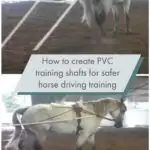
Fernando L Santana
Sunday 2nd of May 2021
Hello My name is Nando, I thank you for your tips on driving a horse and buggy. Your suggestions were very practical and made sense.